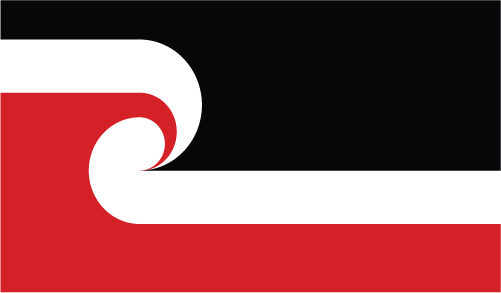Commission releases expert reports about the WACC percentile
Published23 Jun 2014
The Commerce Commission has released a number of expert reports as part of its ongoing review of the appropriate percentile estimate of the weighted average cost of capital (WACC).
The Commerce Commission has released a number of expert reports as part of its ongoing review of the appropriate percentile estimate of the weighted average cost of capital (WACC). The WACC is used in the price-quality path and information disclosure regimes that apply to businesses regulated under Part 4 of the Commerce Act 1986.
In a judgment at the end of last year, the High Court questioned the Commission’s use of the 75th percentile estimate of the WACC to set price-quality paths. The Court considered the 75th percentile was insufficiently supported by evidence, and might be at odds with the Part 4 objective to limit the ability of regulated suppliers to earn excessive profits.
Following consultation with stakeholders about the implications of the judgment, the Commission sought further evidence to inform its decision whether the appropriate level is above, below, or at the 75th percentile.
“The reports released today add to the analytical and empirical evidence already provided in submissions from interested parties about the appropriate WACC percentile,” said Commerce Commission Deputy Chair Sue Begg. “Most of the quantitative analysis undertaken focuses on the electricity sector, because we are resetting prices for electricity lines services for the next five years in November.”
“Despite that focus, the evidence is relevant to all the sectors regulated under Part 4, including airports and gas pipeline businesses. We are releasing these reports in advance of our draft decision so that all interested parties have more time to engage their own experts to comment on that evidence.”
The reports were prepared by a number of expert advisers and firms engaged by the Commission: Professor Ingo Vogelsang of Boston University, Professor Julian Franks of the London Business School, Associate Professor Martin Lally of Victoria University of Wellington, European economic consulting firm Oxera, and the Australian consultancy Economic Insights.
The Commission also released a working paper about regulatory incentives and the cost of capital, and plans to release a peer review of Oxera’s report by Professor Vogelsang when it is available.
Submitters will be able to provide their views on these reports as part of their submissions on the Commission’s draft decision. A process update paper accompanying the reports sets out the intended timing and scope of the draft decision.
“At this stage, the main change to our process is to delay our draft decision on the appropriate WACC percentile for airports, given the combination of its different industry characteristics and its regulatory regime” said Ms Begg. “We will advise the revised timeline for our airports draft decision at a later date.”
You can find the expert reports on the Further work on WACC page.
Background
Part 4
Services regulated under Part 4 of the Commerce Act that have price-quality paths include electricity lines services and gas pipeline services. Services that are subject to information disclosure under Part 4 include those, as well as specified airport services at Auckland, Wellington and Christchurch international airports.
Input methodologies
Under Part 4, the Commission is required to set ‘input methodologies’. Input methodologies involve setting upfront regulatory rules, processes and requirements that apply to the regulatory instruments under Part 4, including methodologies for determining the cost of capital. They were determined in December 2010 for specified airport services, electricity distribution and transmission, and gas pipelines. The Commission must review each input methodology no later than seven years after its date of publication and, after that, at intervals of no more than seven years.
The percentile estimate of the weighted average cost of capital
The cost of capital is the financial return that investors require from an investment given its risk. Investors have choices, and will not invest in an asset unless the expected return is at least as good as that they would expect to get from a different investment of similar risk. The WACC reflects the cost of debt and the cost of equity, and the respective portion of each that is used to fund an investment.
The current cost of capital input methodologies require that the Commission must apply the 75th percentile estimate of the WACC range (‘75th percentile’) when setting default or customised price-quality paths applying to electricity distribution businesses and gas pipeline businesses, or the individual price-quality path applying to Transpower. The Commission must reset the default price-quality paths for electricity distribution businesses and reset Transpower’s individual price-quality path by the end of November this year.
The cost of capital input methodologies also require the Commission to publish 75th percentile WACC estimates, mid-point WACC estimates and 25th percentile WACC estimates for all suppliers that are subject to information disclosure regulation. ‘Consumer-owned’ electricity distribution businesses and the three main international airports are subject to information disclosure regulation only. In the Commission’s recent reports on how effectively information disclosure regulation is promoting the Part 4 purpose in respect of specified airport services, the Commission assessed airport profitability against a WACC range from the mid-point to the 75th percentile.
In its December 2013 judgment on the Commission’s input methodologies, the High Court suggested that using the 75th percentile estimate of the WACC may be at odds with the Part 4 objective to limit the ability of regulated suppliers to earn excessive profits. Following consultation with stakeholders about the implications of the judgment, on 31 March this year the Commission decided to issue a notice of intention to do further work on the input methodologies relating to the percentile estimate of the WACC. The Commission considers this work to be necessary to address the return on investment uncertainty that will exist until the question of the appropriate percentile is resolved.
The notice of intention, as well as consultation material to date on the WACC percentile, can be viewed on the Further work on WACC page.
